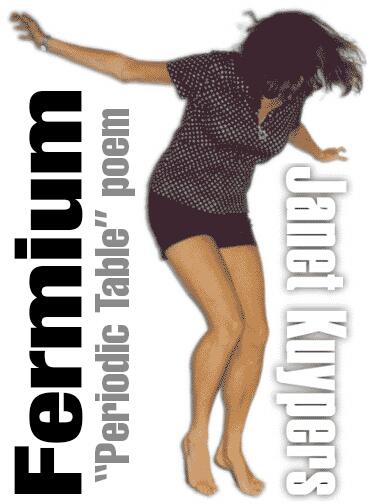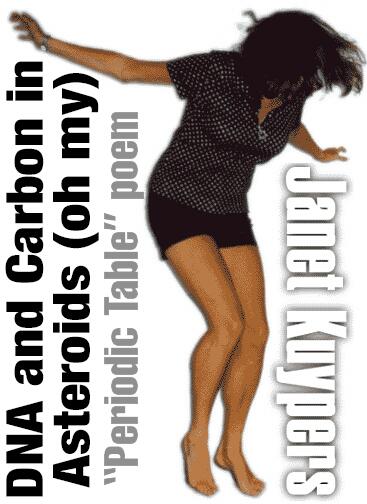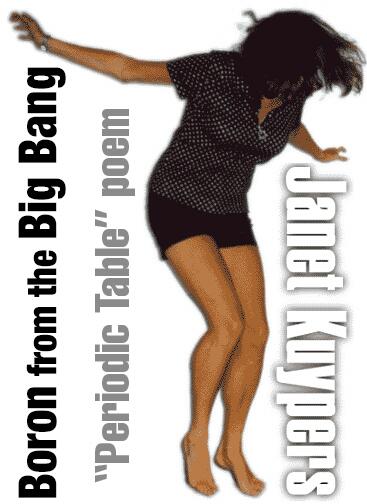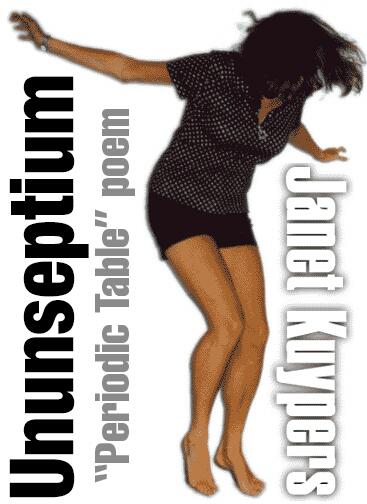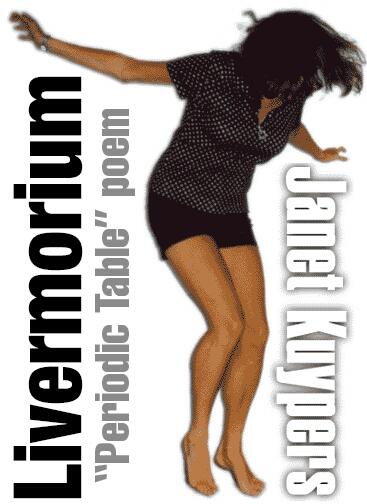Holmium
Janet Kuypers
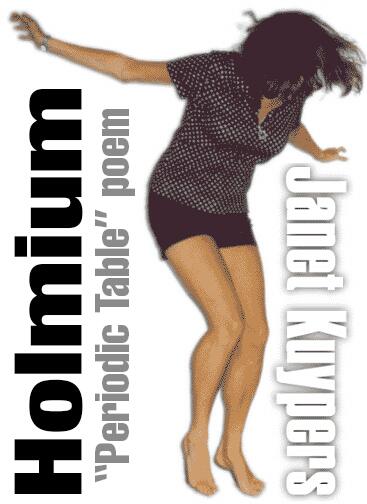
from the “Periodic Table of Poetry”” series (#67, Ho)
7/18/13
Got a set of poetry word magnets
(so you could arrange words on your fridge
to write a message, or write a poem),
and even though I remembered
that magnets have two sides with two poles,
I still took one of the magnets
(I think the word on this magnet was “stick”)
and turned it around, to see
how it wouldn’t stick to the fridge.
Now, Holmium has the highest
magnetic strength of any element,
so I thought about this magnet’s poles —
but I didn’t know that scientists
have been using Holmium
to try to discover the widely theorized
and avidly debated “magnetic monopole”
(a magnet that only has one pole).
Grand unified and superstring theories
predict their existence, and these
magnetic monopoles could explain a ton
about space, time, and the laws of physics.
But the theory is that there’s so little of it,
and nobody’s been able to even find it,
so they’ll keep using this magnetic Holmium
to try to find this hypothetical particle…
And it’s strange, when it comes to Holmium,
I mean, it’s used to color cubic zirconia…
And when it comes to that magnetism,
Holmium can even absorb nuclear neutrons.
But the cool thing is that Holmium
is used for dental and medical purposes,
and it’s even used with solid state lasers
to remove some early stage cancers
with only a local anesthetic.
Wow, that
and it can help scientists
understand more about the universe
(even if it’s only on a quantum level).
I guess there was a reason why
I was so drawn to these qualities….

